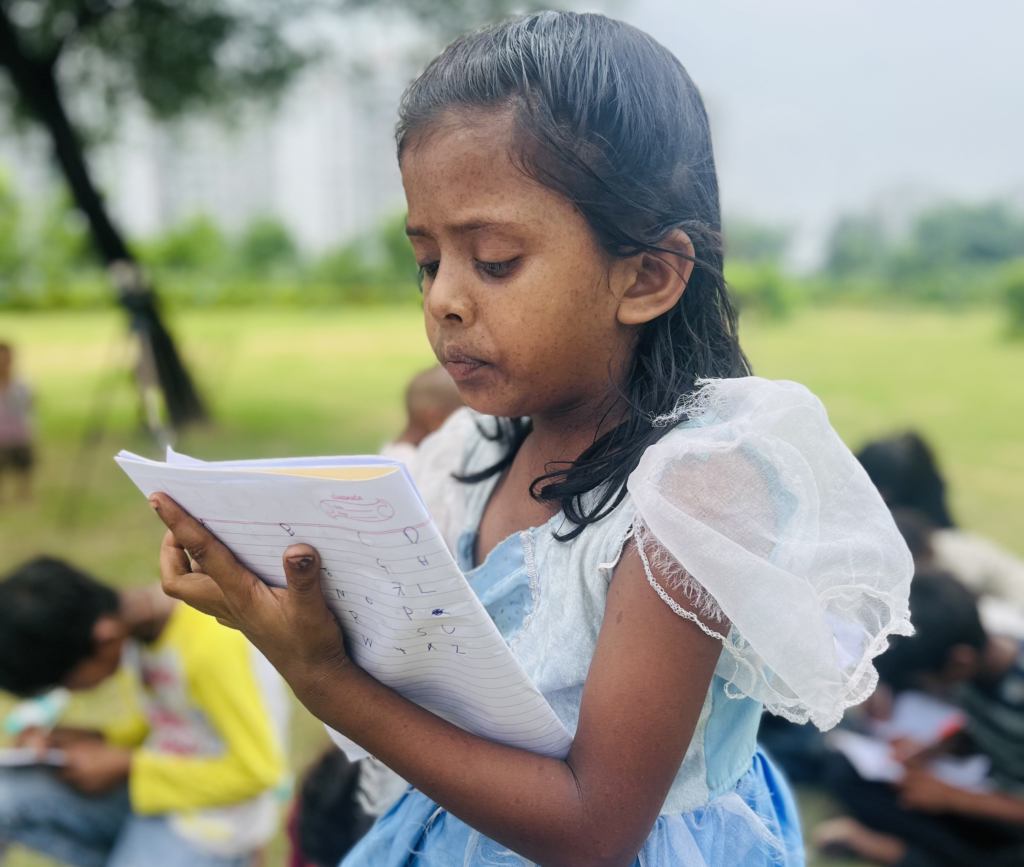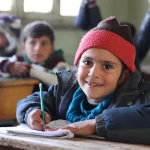“effect of education of children on poverty: How Education Lifts Children Out of Poverty”
Effect of education of children on poverty is examined in this article. Education of children plays a pivotal role in breaking the cycle of poverty by offering a pathway to opportunity and empowerment. Through access to quality education, children gain essential knowledge, skills, and abilities that equip them to navigate life’s challenges and seize economic opportunities. Education not only opens doors to better employment prospects and higher incomes but also fosters critical thinking, problem-solving, and decision-making skills essential for socioeconomic advancement. Moreover, educated individuals are more likely to make informed choices about their health, finances, and overall well-being, contributing to improved life outcomes and reduced dependency on welfare systems. Overall, investing in the education of children is not just an investment in their future but also a powerful strategy for poverty alleviation and sustainable development.

Economic growth is associated with education.
Education is intricately linked to economic growth through various channels. Firstly, an educated workforce is more productive and innovative, driving higher levels of efficiency and competitiveness in industries. Skilled workers are better equipped to adapt to technological advancements and contribute to increased productivity levels. Moreover, education fosters entrepreneurship by providing individuals with the knowledge and skills necessary to start and manage businesses, leading to job creation and economic expansion. Additionally, investments in education lead to improvements in human capital, resulting in higher wages and incomes for individuals. As the overall educational attainment of a population increases, there is a corresponding rise in the overall quality of labor, which attracts more investment and stimulates economic growth. Furthermore, education enhances social mobility, allowing individuals from diverse backgrounds to access better job opportunities and contribute to economic development. Overall, education acts as a catalyst for economic growth by empowering individuals, fostering innovation, and enhancing productivity and competitiveness in the global market.
Providing education universally can combat inequality: effect of education of children on poverty
Universal education can fight inequality in several ways, as highlighted in the provided text. Firstly, education is considered a basic human right for all, and ensuring universal access to education helps level the playing field by providing opportunities to marginalized communities and individuals. By tailoring education to the unique needs of marginalized groups, such as addressing gender disparities in the classroom, universal education can act as a lever against systemic barriers that perpetuate inequality.
Moreover, education empowers individuals with the knowledge and skills necessary to break the cycle of poverty, thus reducing disparities in socioeconomic status. By providing equal access to quality education, regardless of socioeconomic background, universal education can mitigate the effects of poverty and contribute to greater social and economic mobility.

Education correlates with decreased rates of maternal and infant mortality: effect of education of children on poverty
Education is intricately linked to lower maternal and infant mortality rates through various pathways. Firstly, educated women tend to have greater access to information and resources regarding maternal and child health care. They are more likely to seek prenatal care, have skilled attendance during childbirth, and follow recommended practices for maternal and newborn health, leading to reduced maternal and infant mortality rates.
Furthermore, education empowers women to make informed decisions about their reproductive health, including family planning and spacing of pregnancies. Educated women are more likely to delay childbearing, have fewer children overall, and space their pregnancies appropriately, which can reduce the risks of maternal complications and improve birth outcomes, consequently lowering maternal and infant mortality rates.
Moreover, education enhances women’s socioeconomic status and autonomy, which can positively influence health-seeking behaviors and access to healthcare services. Educated women are more likely to have better economic opportunities, access to healthcare facilities, and decision-making power within their households, all of which contribute to improved maternal and child health outcomes.

Additionally, education indirectly impacts infant mortality rates by improving the health and well-being of mothers, as healthier mothers are more likely to have healthier pregnancies and infants. Educated mothers are more likely to adopt healthier lifestyles, including proper nutrition and hygiene practices, which can reduce the risk of infant mortality.
Overall, education plays a crucial role in lowering maternal and infant mortality rates by empowering women with knowledge, improving access to healthcare services, and enhancing socioeconomic status and decision-making power, ultimately leading to better maternal and child health outcomes.
Education is also associated with a reduction in stunting rates.
Education also contributes to lowering stunting rates, primarily through its impact on maternal knowledge and behavior. Educated mothers are more likely to have access to information about proper nutrition during pregnancy and early childhood, including the importance of breastfeeding and the introduction of nutritious complementary foods. They are also better equipped to understand and implement hygiene practices that reduce the risk of infections and diseases that can contribute to stunting.
Furthermore, education correlates with higher socioeconomic status, which enables families to afford nutritious foods and access healthcare services. Educated parents are more likely to have stable incomes and better access to resources, allowing them to provide a nourishing diet for their children and seek medical attention when needed.
Moreover, education empowers individuals with critical thinking skills, enabling them to recognize the importance of early childhood nutrition and health. Educated parents are more likely to engage in positive caregiving practices, such as responsive feeding and stimulating early childhood development activities, which promote healthy growth and development and reduce the risk of stunting.

Additionally, education plays a role in shaping social norms and behaviors related to nutrition and health within communities. Educated individuals are more likely to advocate for policies and programs that address malnutrition and stunting, leading to improved access to nutrition interventions and healthcare services for vulnerable populations.
Overall, education is a critical determinant of child nutrition and health, directly and indirectly contributing to lowering stunting rates by empowering parents with knowledge, resources, and skills to provide optimal care for their children and advocate for their well-being within their communities.
Education mitigates vulnerability to HIV and AIDS.
Education reduces vulnerability to HIV and AIDS through several interconnected pathways. Firstly, education provides individuals with accurate information about HIV transmission, prevention, and treatment. By increasing knowledge and awareness of the disease, education helps dispel myths and misconceptions surrounding HIV/AIDS, empowering individuals to make informed decisions about their sexual health and reduce risky behaviors that may lead to transmission.
Moreover, education fosters the development of life skills, such as critical thinking, communication, and negotiation, which are essential for practicing safer sexual behaviors and navigating complex social situations. Educated individuals are better equipped to assert their rights, negotiate safer sexual practices, and resist peer pressure and coercion, reducing their vulnerability to HIV infection.
Furthermore, education promotes gender equality and empowers women and girls to protect themselves from HIV/AIDS. Educated women are more likely to have control over their reproductive health, including the ability to negotiate condom use and access sexual and reproductive health services. Education also challenges harmful gender norms and practices that increase women’s vulnerability to HIV/AIDS, such as gender-based violence and unequal power dynamics in sexual relationships.
Additionally, education plays a crucial role in addressing stigma and discrimination associated with HIV/AIDS. By promoting empathy, understanding, and acceptance of people living with HIV/AIDS, education helps combat stigma and discrimination, creating supportive environments that encourage testing, treatment, and adherence to medication among affected individuals.
Overall, education is a powerful tool for reducing vulnerability to HIV and AIDS by equipping individuals with knowledge, skills, and agency to protect themselves and others, promoting gender equality, challenging stigma and discrimination, and fostering supportive communities that prioritize sexual health and well-being.
Children’s education decreases vulnerability to natural disasters and climate change.
Education of children is essential for lowering vulnerability to natural disasters and climate change in several ways. Firstly, it increases awareness and preparedness by providing knowledge about the risks and impacts of such events, enabling children to understand the importance of measures like evacuation plans and early warning systems. Additionally, education promotes resilience and adaptation by fostering critical thinking and problem-solving skills, empowering children to develop sustainable practices and mitigate the effects of climate change. Moreover, education encourages community engagement and empowerment, allowing children to become advocates for environmental sustainability and disaster risk reduction, thereby contributing to building resilience at the local level. Overall, education equips children with the knowledge, skills, and agency necessary to address the challenges posed by natural disasters and climate change, reducing their vulnerability and fostering a more sustainable future.
Education diminishes violence within households and communities.
Education plays a crucial role in reducing violence at home and in communities through various interconnected pathways. Firstly, education fosters the development of critical thinking skills, empathy, and conflict resolution abilities in individuals, enabling them to understand the root causes of violence and explore non-violent solutions to conflicts. By promoting social and emotional learning, education equips individuals with the tools to communicate effectively, manage emotions, and build positive relationships, thereby reducing the likelihood of resorting to violence in interpersonal interactions.
Moreover, education empowers individuals, particularly women and girls, by providing them with knowledge about their rights and legal protections against violence. Educated individuals are better equipped to recognize and challenge harmful gender norms and practices that perpetuate violence, such as gender-based discrimination and unequal power dynamics. By promoting gender equality and women’s empowerment, education helps create more equitable and respectful relationships, reducing the incidence of domestic violence and other forms of gender-based violence.
Furthermore, education contributes to the creation of supportive and inclusive communities that prioritize peace and non-violence. By promoting values of tolerance, respect, and social cohesion, education fosters a culture of mutual understanding and cooperation, reducing tensions and conflicts within communities. Additionally, education plays a role in addressing structural inequalities and social injustices that contribute to violence, such as poverty, discrimination, and lack of access to resources and opportunities.
Overall, education serves as a powerful tool for reducing violence at home and in communities by promoting critical thinking, empowering individuals, challenging harmful gender norms, and fostering inclusive and peaceful societies. Through education, individuals and communities can work together to create safer and more resilient environments where violence is less prevalent and conflicts are resolved peacefully.
Final thought
In conclusion, the effect of education on children’s lives, particularly in the context of poverty, is profound and multi-faceted. Education serves as a powerful catalyst for economic growth, empowerment, and social progress. By providing children with access to quality education, we not only equip them with the knowledge and skills necessary to break the cycle of poverty but also empower them to lead healthier, safer, and more fulfilling lives. From reducing maternal and infant mortality rates to combating inequality and violence, education serves as a transformative force that uplifts individuals, families, and communities, offering hope for a brighter and more equitable future.




